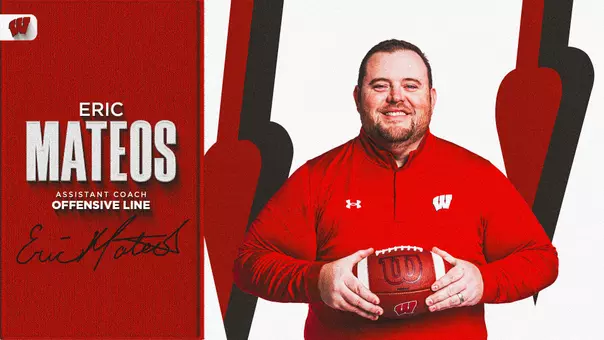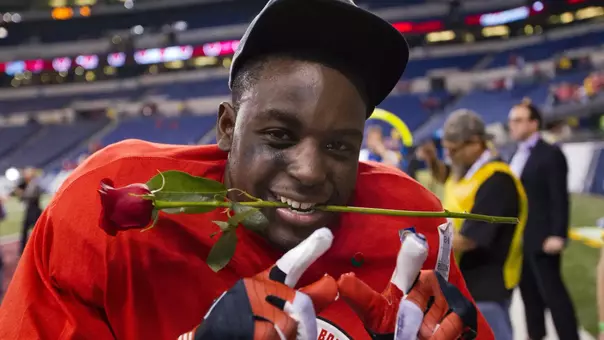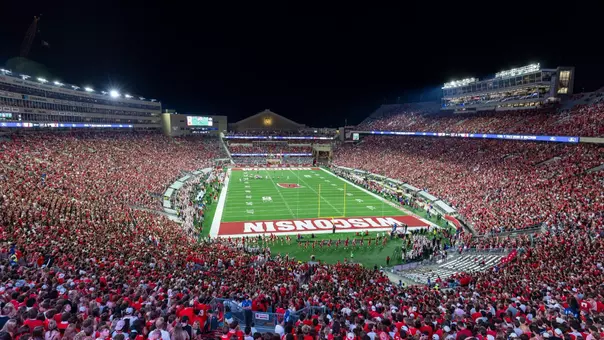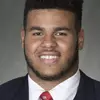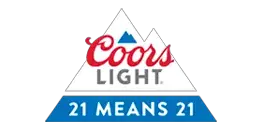Lucas at Large: Debate about targeting hits home for Badgers
October 21, 2017 | Football, Mike Lucas, Varsity Magazine
Safety at the forefront of any conversation about rules
 |
||
|
BY MIKE LUCAS
UWBadgers.com Senior Writer
MADISON, Wis. — With time running out in the first half, Wisconsin wide receiver Kyle Jefferson ran a shallow crosser, a high-percentage throw designed to create a mismatch in space.
Jefferson worked his route across the middle of the Michigan State defense. After making the catch, he turned upfield and was flattened by safety Nehemiah Warrick.
Leading with his head, Warrick initiated a helmet-on-helmet collision with the spindly Jefferson, who was defenseless. There was no flag on the play.
Jefferson considered himself "lucky." He escaped with "only" a concussion. He later became a poster child (albeit the victim) for targeting DOs and DON'Ts in a Big Ten training video for officials.
That was 10 years ago.
Today, there's more awareness and sensitivity to such dangerous hits at the collegiate level. But the work is not done in conditioning players, coaches and fans to the consequences.
Obviously, there's still gray area in the assessment and application of the penalty. At times, it can feel overly severe when a player is automatically ejected for seemingly making a "football play."
On the dawning of the targeting age, one concerned coach (and it could have been one hundred) pointed out, "There's only one person who knows intent and everyone else is guessing.
"It's a tough game and my feeling is there are some accepted and inherent risks playing football. But that doesn't mean you should be subjected to undue risk."
Jim Leonhard was nearing the gun lap of his NFL career when it got tougher to play defense because the "strike zone" started to shrink for safeties like the undersized but fearless 10-year vet.
Tacklers had to conform to the smaller hitting areas on quarterbacks, running backs and wide receivers after the league began to more seriously discourage the "high" hits on defenseless players. High being strikes to the head and/or neck area, helmet-to-helmet contact.
"There are certain situations where there is not much you can do," reasoned Leonhard. "The game is played at a high rate of speed and you're making snap judgements.
"You're talking about inches — three inches, six inches, nine inches — sometimes being the difference between an incredible tackle and one you're getting kicked out of the game for."
Did Leonhard make the necessary changes in his tackling approach and techniques? Was he more conscious of his target and the strike zone? He was after getting fined $15,000.
"I was coming out of the middle of the field, tracking the ball to get an interception," he recounted. "And, literally, the last two steps I realized I was going to be about a step late.
"So, I hit the receiver. They called it. I tried to appeal it. They didn't agree. Everybody talks about how for NFL players the money doesn't matter.
"Trust me, 15 grand is 15 grand. I didn't want to lose that money and I tried to change the way I played. But, just like that situation, there are certain things that happen that are very difficult to avoid.
"There's no question that players are making smarter decisions. But there are still hits that are going to happen. To me, common sense has to prevail a little bit."
They're 6-0 and preparing to host Maryland on Saturday. Be there to cheer on @BadgerFootball for Homecoming. ???? http://goo.gl/HoYRaD
— Wisconsin Football (@BadgerFB) October 18, 2017
Leonhard, who retired in 2014, is now in the middle of his second season as an assistant on Paul Chryst's staff; his first as both the secondary coach and defensive coordinator.
"Obviously, it's not something that you can work live, right?" he said of practicing what is legal or illegal in tackling drills. "You're not going to do that to your own players.
"But you have to bring up those situations as much as possible. Like I said earlier, there are some hits that are just going to happen. You look at what happened with T.J. Edwards."
In the closing seconds of the first half last Saturday, Edwards, a starting inside linebacker, was flagged for a personal foul after tackling Purdue tight end Cole Herdman.
The play came under video review and targeting was confirmed. Edwards was ejected and had to sit out the second half of the Badgers' 17-9 victory over the Boilermakers.
"It was a bang-bang play," Edwards said. "With the contact, I figured they would call something. But I didn't feel myself leave my feet or try to launch.
"That's something we preach here — safe tackling. They made the call and they felt it was the right one and you have to respect it because they're trying to keep the game safe. I appreciate that."
But in the same breath, he pleaded, "I don't know what else I could do in that situation."
He didn't launch. He didn't use the crown of his helmet. But he hit a defenseless player. And he made helmet-to-helmet contact with Herdman, who had lowered his head, altering the strike zone.
"I'm a Badger"
— Wisconsin Football (@BadgerFB) October 16, 2017
Is there a benefit of doubt? Dean Blandino, the former NFL Vice President of Officiating, felt like there could have been based on what he witnessed. Blandino is now a FOX Sports rules analyst.
While acknowledging contact to the head and neck area, he saw Edwards trying to wrap up on the tackle. He didn't see him dropping his helmet or leading with a shoulder or forearm.
There were no "indicators" of targeting or forcible contact, Blandino opined. But he confirmed an err-on-the-side-of-caution philosophy that has been adopted on safety issues.
"The only way he (Edwards) would have had zero contact with (Herdman's) head would have been to jump around him," suggested Leonhard, re-tracing its bang-bang nature.
"There's not really anything — in my opinion — that you can tell T.J. to do differently … not anything he could have done outside of completely avoiding the receiver."
For defensive players like Edwards, whose intent is to do it the right way, it can be a conundrum. "It has definitely become smaller (the strike zone) for the safety of players," he said. "And I get that."


